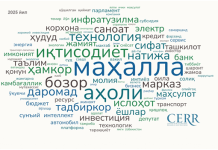By Qamar Bashir
China has emerged as the prime driver and a leader of the Shanghai Cooperation Organization (SCO) not only in the political, economic, and commercial sectors but also by providing the backbone of infrastructure, including roads, railroads, and air links. China has invested a total of $150 billion, reinforcing its broader Eurasian strategic sectoral development. This figure includes direct investments, loans, and financial support provided through various Chinese financial institutions such as the AIIB and the Silk Road Fund.
Seeing is believing. During my visit to China in August 2024, I witnessed the breathtaking development taking place at a neck-breaking speed, particularly in Xinjiang and Shaanxiprovinces, aimed at uplifting the SCO. While the SCO may not yet be equal to, it is becoming competitive with other regional organizations such as NATO, ASEAN, the EU, and BRICS. With two superpowers, China and Russia, as the engines of influence, weight, and financial might, the SCO, currently strong in Central Asia, is likely to expand its integration and scope to eventually become a global force. This will help balance Western influence, particularly in Eurasia, and serve as a platform for China and Russia to collaborate on regional issues.
During the visit, we observed that China has established sectoral hubs for all initiatives under the purview of the SCO, including security (counter-terrorism, regional stability) through the institutional framework of the Regional Anti-Terrorist Structure (RATS). Economic cooperation is being advanced through the Belt and Road Initiative (BRI), with China committing over $50 billion in infrastructure projects such as roads, railways, and energy pipelines to enhance connectivity within the SCO region.
China has invested over $10 billion in the Digital Silk Road, focusing on digital infrastructure, including 5G networks, fiber optic cables, and smart city initiatives. It has invested $5-7 billion in developing logistics hubs, warehousing, and cross-border trade facilities. It has invested in agricultural R&D and joint ventures within SCO member states at around $2-3 billion, which includes funding for advanced farming techniques, seed development, and sustainable agriculture projects.
Besides providing sectoral hubs for SCO initiatives, which we witnessed firsthand, China is also pursuing highly capital-intensive bilateral projects with other SCO member countries.
In Tajikistan, China has invested approximately $3 billion in road and power infrastructure projects, while the Khorgos Gateway on the China-Kazakhstan border, a major logistics hub, has seen $2 billion in investments. Energy and industrial projects in Uzbekistan have attracted about $4 billion, and agricultural cooperation with Kazakhstan has involved around $1.5 billion. The China-Russia energy cooperation, particularly through the Power of Siberia gas pipeline, represents a $55 billion investment, while the China-Mongolia-Russia Economic Corridor has seen investments of $15 billion to enhance connectivity and trade.
The dividends of China’s aggressive integration with other SCO members have been immense. Since the formation of the SCO, bilateral trade and investment with its members have significantly expanded. Trade with Russia reached a record $190 billion in 2022, fueled by energy cooperation and infrastructure investments. In Central Asia, China’s trade with Kazakhstan surpassed $25 billion. Uzbekistan saw trade grow to around $8 billion, complemented by Chinese investments in agriculture and industrial sectors.
During our discussion, a key factor regarding Pakistan’s inability to fully utilize the SCO forum became clear. Pakistan, with its limited road connectivity, has failed to establish direct road, air, or rail links with other SCO members, especially Central Asian countries (CAC), Belarus, and Russia.
Unlike other SCO countries, which have multiple transportation links, Pakistan’s reliance on the KKH as its only road connection with China makes it vulnerable to disruptions and limits its scope for increasing trade or engaging in regional transportation networks.
Pakistan lacks direct railroad connections with other SCO member countries, including the CAC. In contrast, China, Russia, and the CAC are connected via major rail corridors that facilitate trade and transportation.
These countries are also connected through a network of highways, road links, and regional infrastructure projects. Pakistan, however, has not yet integrated into this network beyond its bilateral connection with China through the KKH. While Pakistan has air links with China, it lacks extensive air transportation routes with Central Asian SCO members. Air transport between Pakistan and other SCO states is relatively underdeveloped compared to the routes between China, Central Asia, and Russia.
Pakistan’s limited transport links with other SCO members restrict its ability to fully benefit from the economic and trade opportunities within the organization. CAC, Russia, and China can trade and cooperate more seamlessly because of their physical connectivity, while Pakistan’s relative isolation limits its engagement beyond its bilateral relationship with China.
This lack of connection to Central Asian markets and other SCO member states means Pakistan cannot easily participate in the expanding trade routes that China and Central Asia are developing. This isolation reduces Pakistan’s potential role as a transit country for SCO trade and restricts its access to CAC markets.
Pakistan’s limited integration into the SCO system compared to Central Asian states, Belarus, Russia, and others can be attributed to geopolitical tensions, infrastructural and economic limitations, security concerns, and internal political challenges. While Pakistan plays a vital role in China’s bilateral strategy, particularly through CPEC, its integration within the broader SCO framework remains limited due to these complex factors.
China is making concerted efforts across all dimensions to create enabling conditions for Pakistan through the bilateral platform of CPEC, providing a gateway to fully capitalize on the SCO’s opportunities. However, our inability to rise to the occasion stems from a national attitude marked by lethargy, lack of seriousness, and a failure to harness our inherent potential. It is crucial that we move beyond the petty issues that drain the energy of our already strained state structure. Now is the time to proactively enhance our regional connectivity, diversify our economic ties, deepen security cooperation, and take on a more active leadership role within the SCO. By leveraging our strategic position and engaging more deeply with other SCO members, Pakistan can maximize its benefits from the organization and play a stronger role in shaping regional affairs. The path forward requires decisive action, focused on long-term national interests, to unlock the full potential of our participation in the SCO.
By Qamar Bashir
Former Press Secretary to the President
Former Press Minister to the Embassy of Pakistan to France
Former MD, SRBC, CEO, ATV

















